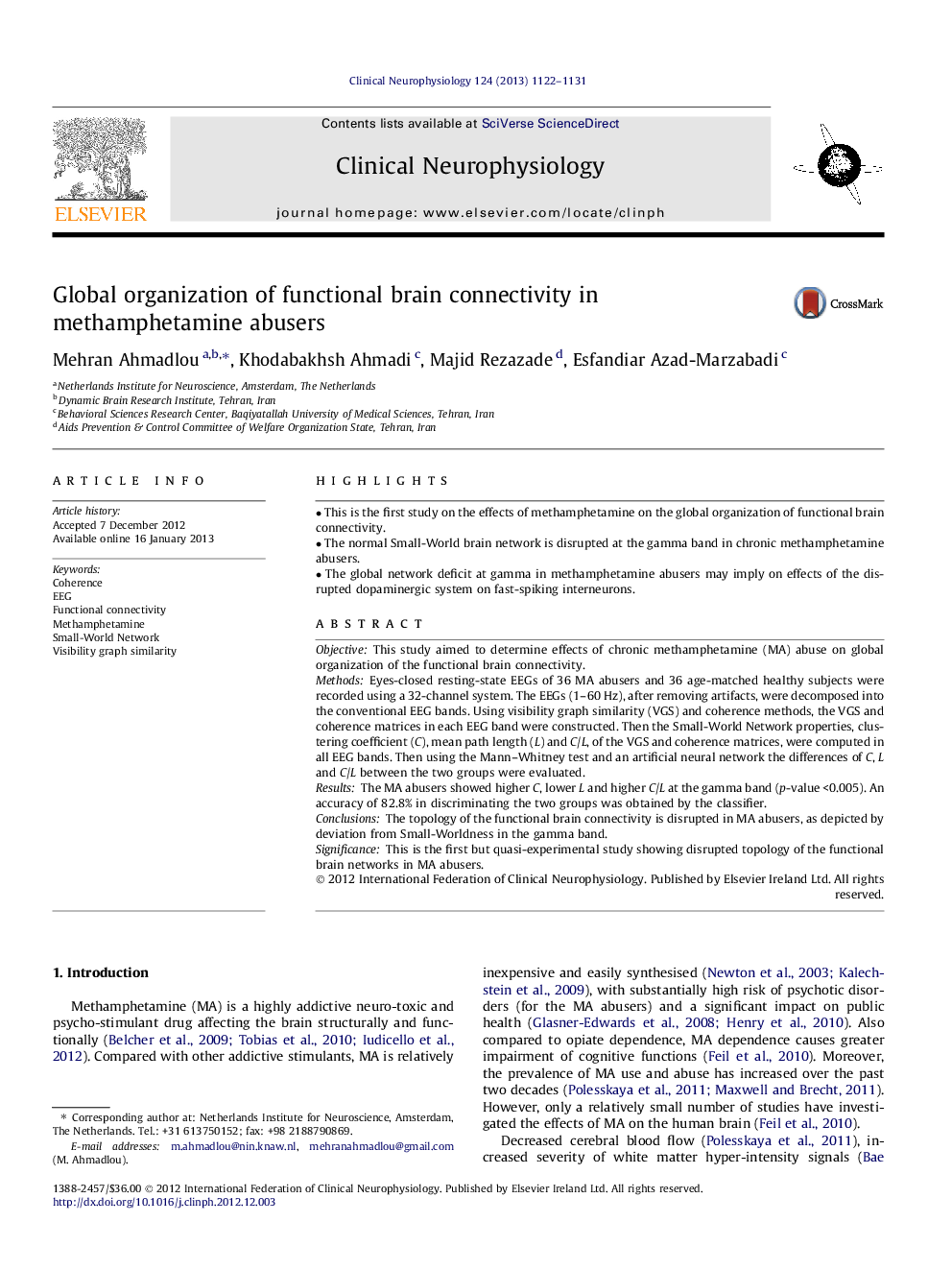| Article ID | Journal | Published Year | Pages | File Type |
|---|---|---|---|---|
| 3043867 | Clinical Neurophysiology | 2013 | 10 Pages |
ObjectiveThis study aimed to determine effects of chronic methamphetamine (MA) abuse on global organization of the functional brain connectivity.MethodsEyes-closed resting-state EEGs of 36 MA abusers and 36 age-matched healthy subjects were recorded using a 32-channel system. The EEGs (1–60 Hz), after removing artifacts, were decomposed into the conventional EEG bands. Using visibility graph similarity (VGS) and coherence methods, the VGS and coherence matrices in each EEG band were constructed. Then the Small-World Network properties, clustering coefficient (C), mean path length (L) and C/L, of the VGS and coherence matrices, were computed in all EEG bands. Then using the Mann–Whitney test and an artificial neural network the differences of C, L and C/L between the two groups were evaluated.ResultsThe MA abusers showed higher C, lower L and higher C/L at the gamma band (p-value <0.005). An accuracy of 82.8% in discriminating the two groups was obtained by the classifier.ConclusionsThe topology of the functional brain connectivity is disrupted in MA abusers, as depicted by deviation from Small-Worldness in the gamma band.SignificanceThis is the first but quasi-experimental study showing disrupted topology of the functional brain networks in MA abusers.
► This is the first study on the effects of methamphetamine on the global organization of functional brain connectivity. ► The normal Small-World brain network is disrupted at the gamma band in chronic methamphetamine abusers. ► The global network deficit at gamma in methamphetamine abusers may imply on effects of the disrupted dopaminergic system on fast-spiking interneurons.
